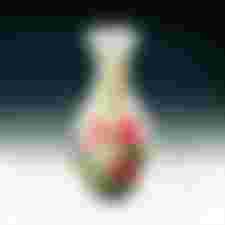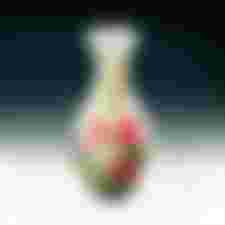A jar (/ˈvɑːz/,/ˈveɪs/, or/ˈveɪz/) is an open compartment. It tends to be produced using various materials, for example, pottery, glass, non-rusting metals, for example, aluminum, metal, bronze, or tempered steel. Indeed, even wood has been utilized to make containers, either by utilizing tree species that normally oppose decay, for example, teak, or by applying a defensive covering to customary wood or plastic . Containers are regularly improved, and they are frequently used to hold cut blossoms. Containers come in various sizes to help whatever bloom its holding or keeping set up.

Containers for the most part have a comparable shape. The foot or the base might be bulbous, level, carinate, or another shape. The body shapes the fundamental bit of the piece. A few jars have a shoulder, where the body bends internal, a neck, which gives tallness, and a lip, where the jar flares retreat at the top. A few containers are additionally given handles.
Different styles and sorts of jars have been created far and wide in various timeframes, for example, Chinese earthenware production and Local American stoneware. In the ceramics of antiquated Greece "container painting" is the customary term covering the acclaimed fine painted earthenware, frequently with numerous figures in scenes from Greek folklore. Such pieces might be alluded to as containers paying little mind to their shape; most were in truth utilized for holding or serving fluids, and many would all the more normally be called cups, containers, etc. In 2003, Grayson Perry won the Turner Prize for his earthenware production, commonly in jar structure.
The potter's wheel was presumably designed in Mesopotamia by the fourth thousand years BCE, however spread across almost all Eurasia and quite a bit of Africa, however it stayed obscure in the New World until the appearance of Europeans.The soonest disclosure of the causes of the potter's wheel was in southern Iraq. The disclosure of this procedure was valuable to the individuals of south Iraq since it filled in as a substitute for their past wasteful conventions. Upon this new method, it would then develop step by step and even be embraced for the utilization of enhancing ceramics

There is a long history of the structure and capacity of the jar in practically completely created societies, and regularly fired articles are altogether the imaginative proof left from disappeared societies. In the early phases of stoneware, the snaking strategy for building was the most used procedure to make earthenware. The curling strategy is the demonstration of working the dirt into long barrel shaped strips that later become smooth dividers.


Woah active na active na haha nice post nice topic lodi.